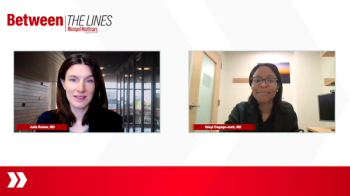
Navigating the Complexities of Bispecific Antibody Therapy in Relapsed/Refractory Multiple Myeloma (R/R MM)
An expert discusses how bispecific antibodies are reshaping the treatment landscape for relapsed/refractory multiple myeloma (R/R MM) by offering off-the-shelf, effective alternatives to CAR T-cell therapy, while emphasizing the need for institutional planning, patient monitoring, and coordinated care to manage continuous therapy, adverse effects, and resource demands.
Episodes in this series
The introduction of bispecific antibodies has significantly altered the treatment paradigm for R/R MM. Unlike CAR T-cell therapies, which are individualized and require manufacturing time, bispecifics offer rapid, off-the-shelf administration. This is particularly advantageous for patients with aggressive disease who need immediate intervention. These therapies work by engaging a patient’s own T cells to target myeloma cells through dual antigen binding, typically without requiring lymphodepleting chemotherapy. Notably, bispecifics have demonstrated clinical activity even in patients who have previously received BCMA-targeted treatments, supporting their use as salvage options in later treatment lines.
One major shift introduced by bispecifics is the move from fixed-duration to continuous therapy, allowing for sustained disease control. This ongoing treatment approach requires close monitoring and proactive management of adverse effects such as prolonged cytopenias and hypogammaglobulinemia. With broad eligibility criteria and lower logistical barriers compared with CAR T therapy, bispecifics offer a practical alternative for patients who are not candidates for cell therapy. As a result, these agents are now being studied in earlier treatment lines, with the hope of replicating their high response rates in broader patient populations.
From a formulary and institutional standpoint, key factors influencing bispecific therapy adoption include efficacy, toxicity profile, administration logistics, and cost. While head-to-head clinical comparisons are lacking, real-world data suggest comparable efficacy across approved agents. However, step-up dosing to mitigate cytokine release syndrome can necessitate inpatient monitoring, driving up resource utilization. The ability to administer these therapies in an outpatient setting depends on institutional infrastructure. Furthermore, the total cost of care includes not only drug acquisition but also supportive care, infusion center demands, and hospitalization. As health care systems navigate these complexities, institutions must weigh operational feasibility against clinical benefits to optimize bispecific use for patients with multiple myeloma.
Newsletter
Get the latest industry news, event updates, and more from Managed healthcare Executive.
















































